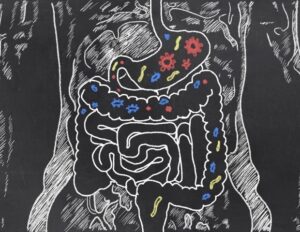
In a groundbreaking study, researchers from UNSW Sydney have discovered why melanoma cells can become more aggressive and lethal. The study, published in Nature Communications, reveals that the physical stress of squeezing through narrow capillaries can transform these cells, endowing them with stem-like properties that enhance their ability to seed new tumors.
This revelation provides critical insights into the deadly process of metastasis, where cancer spreads from its original site to other parts of the body. The transformation of cancer cells into stem-like cells helps explain why metastasis is often fatal, as these cells can survive harsh conditions, resist treatment, and initiate secondary tumors in distant organs.
Understanding the Mechanism
The study’s findings are based on experiments using a biomedical device that simulates blood flow through the narrowest human blood vessels. When melanoma cells are forced through channels narrower than 10 micrometres, they begin to exhibit characteristics similar to cancer stem cells, which are known for their resilience and ability to spread.
Dr. Giulia Silvani, the lead author of the study, developed this ‘microfluidic’ device at the Australian National Fabrication Facility. The device mimics the natural journey of blood through progressively narrower channels, allowing researchers to observe the transformation of cancer cells under mechanical stress.
“Within 15 minutes of being squeezed through the smallest channels, we observed how the melanoma cells became physically deformed,” Dr. Silvani noted. “When we analysed the cells, we detected proteins linked to cancer spread and stem cell-like behaviour.”
Implications for Cancer Treatment
The discovery opens new avenues for therapeutic interventions. By targeting the mechanical forces that lead to metastasis, researchers could potentially prevent cancer from spreading. Professor Kris Kilian, a co-author of the study, suggests that assessing cancer cells in a patient’s bloodstream for their susceptibility to this transformation could help evaluate the risk of metastasis.
Moreover, imaging techniques like MRI could be employed to identify regions with dense microvessels, enabling early detection and intervention to hinder the cells’ progression through these narrow capillaries.
“These results open up new possibilities for prognosis and treatment, by targeting the mechanical forces that lead to metastasis,” Prof. Kilian explained.
Future Research Directions
While the current research primarily focused on melanoma cells, the team is optimistic about applying their findings to other types of solid tumors. Prof. Kilian expressed hope that similar mechanisms might be at play in other cancers, such as breast cancer, which could significantly impact treatment strategies.
Dr. Silvani is eager to continue exploring the potential of microfluidics in understanding cancer spread. “Watching this idea grow from a spark of intuition into a real discovery has been deeply inspiring,” she remarked.
The study not only sheds light on the complex nature of cancer metastasis but also highlights the innovative intersection of engineering and biology. As researchers continue to unravel the mysteries of cancer cells, the hope is that these insights will lead to more effective treatments and improved outcomes for patients battling this devastating disease.






